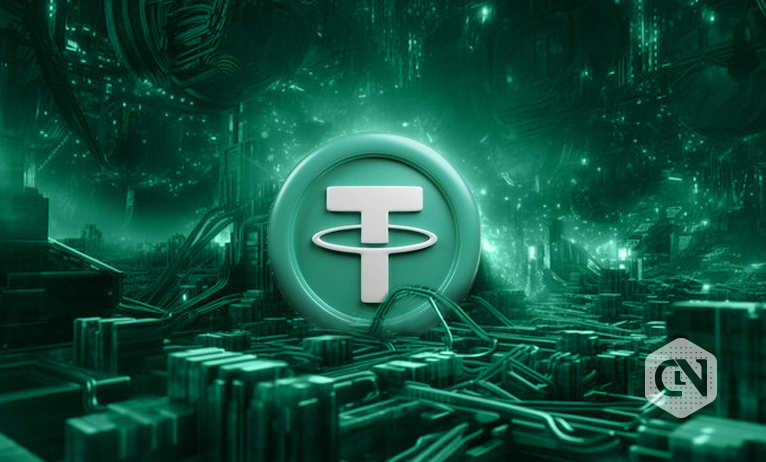When an investment can be quickly and easily traded for other assets – typically cash – without affecting its value, it is said to be liquid. In contrast to liquid assets, which can be more difficult to trade because of a lack of market participants or other circumstances, highly liquid assets may be acquired or sold rapidly and at a fair price. Stablecoins like USD Coin and Tether are a liquidity bridge between cryptocurrencies and fiat currencies in the crypto market.
About Tether: A Stablecoin Pioneer
Tether is known as a stablecoin because of the stability it maintains over other cryptocurrencies. The underlying currency, like the dollar or euro, is the goal of the Tether’s value peg. To maintain the cryptocurrency’s value equal to that of fiat money, Tether maintains sufficient reserves of actual cash or other assets of the same value. The main purpose of Tether is to convert cryptocurrencies into fiat currency to avoid slips, which is the decline in value that occurs when a transaction is initiated.
Tether’s Function as a Liquidity Provider
Tether has emerged as a major participant in enabling liquidity inside the crypto market, where cryptocurrencies have acquired a great deal of popularity in recent years. Tether can be better understood by considering its function as a liquidity provider.
Market Arbitrage
Because of Tether, traders can profit from market arbitrage, which takes advantage of price differences across exchanges. Traders can quickly transfer money between exchanges to take advantage of arbitrage possibilities by using Tether as a reliable option. By raising trade volume and decreasing price differences, this arbitrage activity adds to liquidity and eventually promotes a more stable and liquid market environment.
Facilitating seamless transactions
Tether enables smooth transactions by providing a stable currency option for traders and bettors, shielding rewards from market volatility. Its broad acceptance ensures liquidity and swift transfers within the cryptocurrency ecosystem. Tether also facilitates seamless transactions when used for betting, particularly in sports. Sports bettors require a stable currency to safeguard their rewards from market fluctuations. Therefore, some of the best Tether sports betting sites offer an excellent option for sports enthusiasts due to its consistent value proposition. Additionally, Tether’s widespread acceptance across cryptocurrency exchanges and platforms guarantees liquidity, allowing users to efficiently transfer their winnings or assets back into Tether or other cryptocurrencies as needed.
Enhancing Liquidity
Tether’s broad use as a trading pair on cryptocurrency exchanges boosts overall market liquidity. This is one of the most commonly traded cryptocurrencies, acting as a gateway for traders to enter and exit positions effectively.
Tether’s Role in Decentralized Finance
Tether plays an important role in decentralized finance, especially in De-Fi applications, in many ways. They can be used to build reliable trading pairs such as ETH/USDT, etc.
Stable Trading Pairs
Tether acts as a USD proxy, allowing traders to build reliable trading pairings such as ETH/USDT. Stable pairings also enable the construction of artificial assets based on USD rather than cryptocurrency collateral. This provides important stablecoin performance to the decentralized banking ecosystem.
Collateral for Lending
Users can provide assets as collateral to get loans against other assets through decentralized lending marketplaces. Tether provides a more reliable type of collateral for borrowing. Borrowers can use USDT to secure loans in other crypto assets while avoiding liquidation risk. Lenders also benefit from Tether’s stability while earning interest on providing assets.
Bridging the Crypto and Fiat
Tether is an important link between the crypto economy and regular fiat money. Many cryptocurrency businesses keep large amounts of USDT on hand to meet their fiat liquidity demands. Traders can employ USDT to gain yield in the De-Fi while being exposed to the dollar.
Regulatory Challenges and Controversies
Regulatory challenges and controversies are common in Tether. Some of these challenges arise due to regulations in certain countries that are usually against the idea of implementing crypto in their nations. Many experts are also raising controversies against the Tether.
Uncertainty
The lack of standardization creates issues for both organizations and users, as the regulatory standards can vary significantly between regions. The potential for widespread adoption of cryptocurrencies is limited by this uncertainty, which inhibits investment and innovation in the area.
Security
The decentralization of cryptocurrencies creates a particular difficulty for security regulation and investor protection. Regulators are becoming increasingly concerned about the security of investors’ money and the integrity of cryptocurrency exchanges in instances of fraud, hacking, and market manipulation.
Coordination
Addressing cross-border issues and guaranteeing fairness for market players requires worldwide coordination and collaboration on cryptocurrency regulation. It is difficult because different nations have different regulatory goals and techniques.
Conclusion
Despite the challenges and controversies, Tether still seems to grow in its potential almost every day. They are being implemented in new fields where they can use their features to create something new and big. By addressing the issues faced by Tether, it can become a great tool for ways more than one can imagine.
Credit: Source link
































